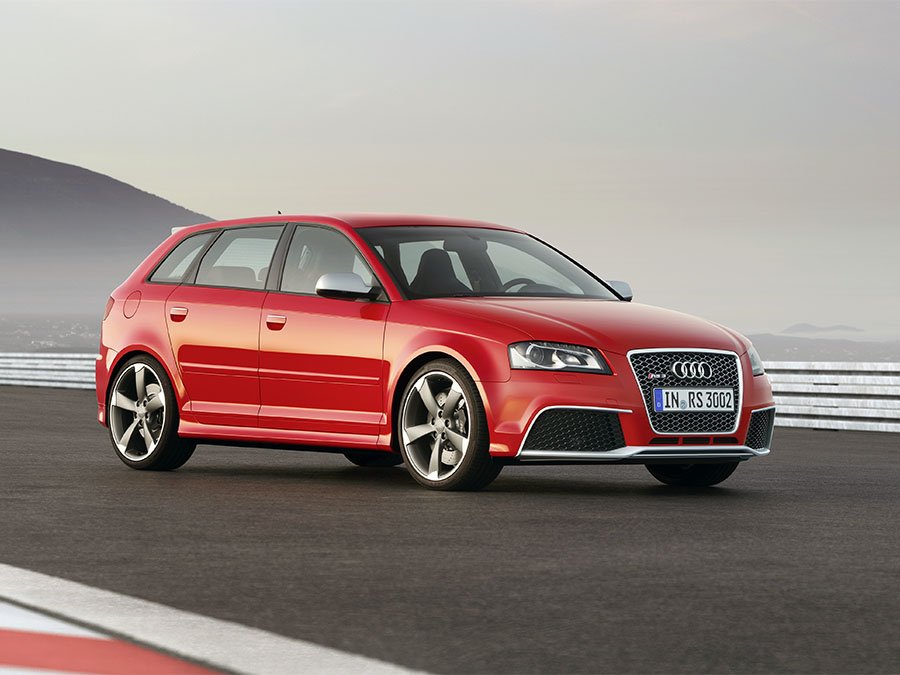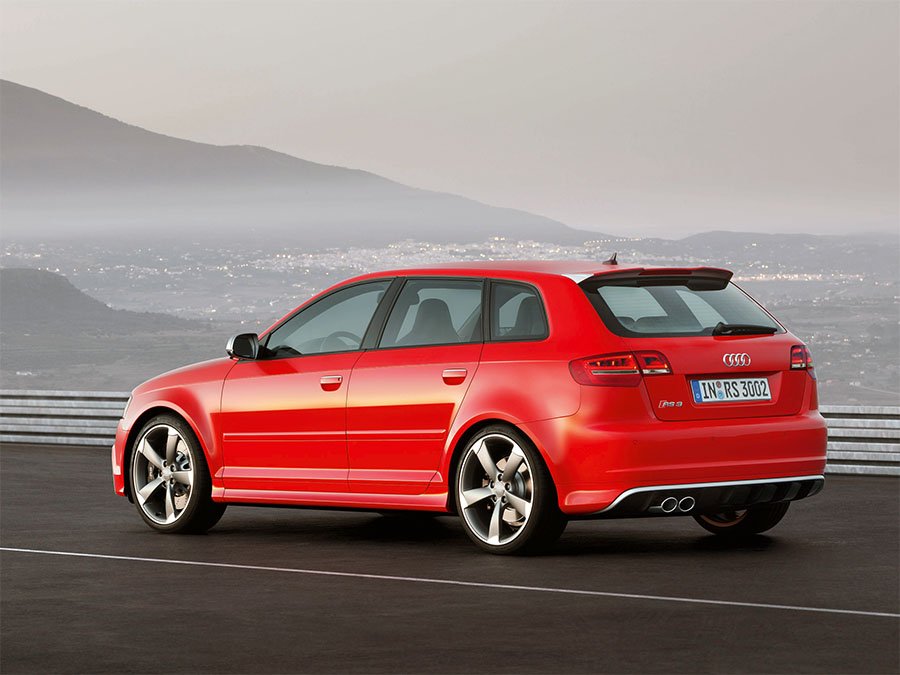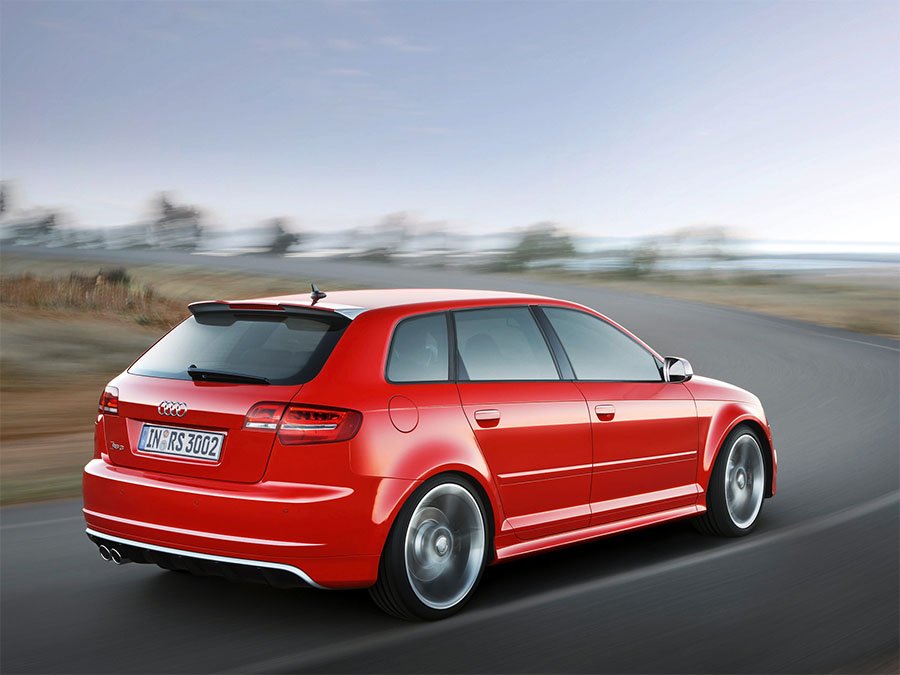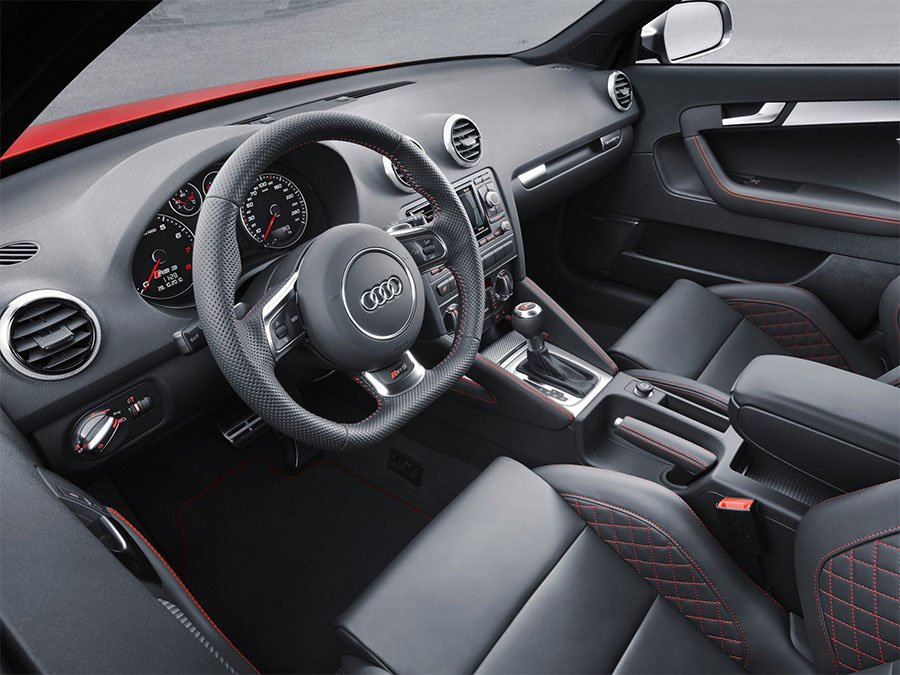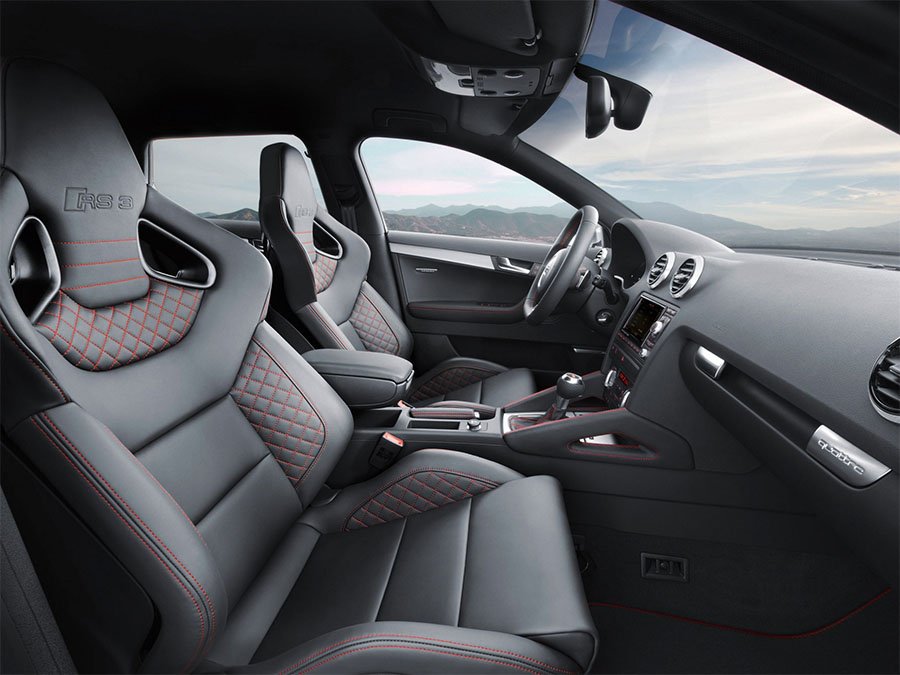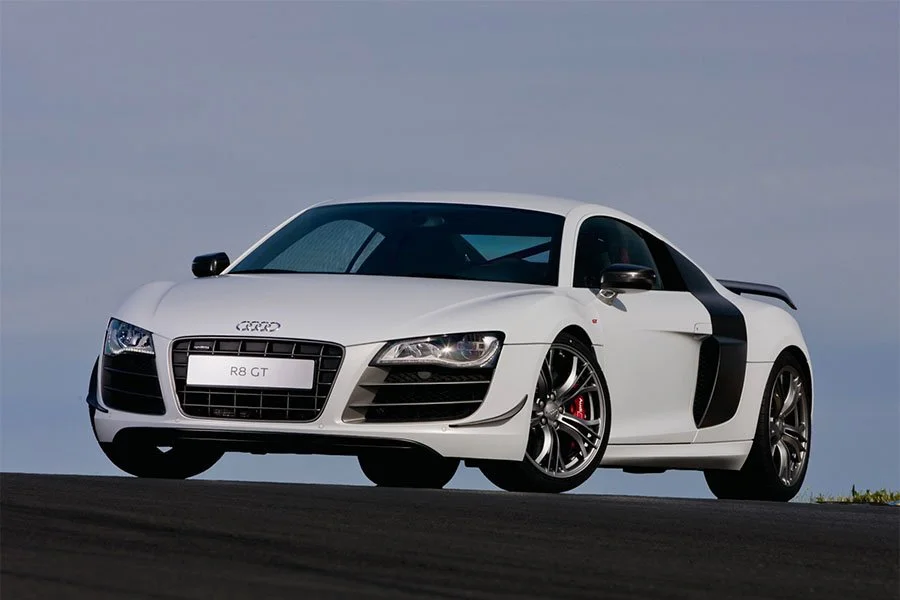Guide: Audi 8P RS3 Sportback - a Histoical & Technical Appraisal
/BACKGROUND
When the first generation Type 8L A3 was launched in September 1996, it marked Audi’s return to the compact class after an absence of 18 years.
The last Audi to compete in this market had been the 50 (Type 86) produced between 1974 and ‘78 on the Volkswagen Group’s A01 platform that was shared with the subsequent VW Polo. Although Audi sold over 180,000 examples of the 50 (which came with either a 1.1 or 1.3-litre four cylinder engine) no successor was lined up as the firm went on to concentrate on larger models.
Nearly two decades after the last 50 had rolled off the production line, the first A3s began to emerge from Ingolstadt on the Volkswagen Group’s new A4 platform (not to be confused with the B5-based A4). Other models that shared the A4 platform included the Audi TT, Volkswagen Golf Mk4 and New Beetle.
Audi offered the A3 as a three or five-door Hatchback and with an array of inline four cylinder petrol and diesel engines. Undoubtedly the most desirable of these first generation A3 variants was the four-wheel drive S3 of 1999 that initially came with a 207bhp turbocharged 1.8 which was subsequently re-tuned to produce 222bhp in 2001.
The second generation Type 8P iteration of the A3 followed at the Geneva Motor Show in March 2003. It was based on the new PQ35 platform shared by the second generation Audi TT, the Audi Q3 and the latest Volkswagen Golf, Scirocco, Touran and Beetle among many others.
An S3 subsequently arrived in 2006 and came with a two-litre turbocharged inline four cylinder motor that now produced 261bhp. From 2008 (when the entire A3 range was face-lifted), the S3 could be configured as a five-door Sportback (a slightly longer variant with increased space for rear passengers and in the trunk) in addition to the original three-door Hatchback layout. An S-Tronic seven-speed Dual Clutch Transmission was also added to the S3’s options list.
Despite the fact the Type 8P A3 was set to be replaced in late 2012 (for the 2013 model year), Audi decided to release an RS-badged variant: the RS3.
Revealed online in November 2010, the RS3 was subsequently given a physical launch at Geneva in March 2011. Production then began at Audi’s Quattro GmbH factory in Neckarsulm.
Like all of Audi’s RS models, this latest Renn Sport followed the familiar theme of a banzai engine dropped into an uprated four-wheel drive chassis dressed in a more aggressive body and kitted out with a top-of-the-range interior.
Unlike the turbocharged four cylinder S3, the RS3 came with the same five cylinder forced induction motor fitted to the TT RS. It was available exclusively in five-door Sportback trim with the normally optional seven-speed DCT gearbox fitted as standard.
CHASSIS
Like every Type 8P A3, the RS3 was based on a steel monocoque bodyshell with 2578mm wheelbase.
Similarly, a MacPherson strut layout was retained up front along with a four-link arrangement at the back.
For the RS3, the suspension geometry was revised, the MacPherson struts were fashioned from lightweight aluminium and redesigned dampers were installed. In the pursuit of improved handling, the springs, dampers and anti-roll bars were stiffened up and the ride height was dropped (by 5mm compared to an S3 and 25mm compared to a regular A3).
The RS3’s braking capability was improved by way of bigger 370mm diameter cross drilled and ventilated front discs (up from 345mm vented-only items on the S3). Four-piston RS-branded calipers painted high gloss black were also installed along with aluminium brake disc covers.
Out back, the S3’s 310mm diameter vented discs and natural aluminium single-piston calipers were carried over.
ABS was fitted as standard along with electromechanical power steering.
Instead of the S3’s 7.5 x 18-inch wheels, the RS3 came with new 8 x 19-inch S-arm Rotor design cast alloy rims with a two-tone machine polished and titanium finish. The front tyres were 10mm wider than those at the rear for improved front-end bite and to reduce understeer.
Compared to the S3, track was 42mm wider at the front and 22mm wider at the rear.
A 60-litre fuel tank from the standard A3 was fitted under the rear seat.
ENGINE / TRANSMISSION
Whereas the S3 ran a four cylinder Type EA113 engine, the RS3 came with the same Type EA255 five cylinder motor fitted to the TT RS.
Transversely mounted, these compact dual overhead camshaft 20 valve power units were based around a reinforced cast-iron block with vermicular-graphite cast-iron crankcase. Lightweight aluminium alloy was used for the cylinder head, pistons and connecting rods. Variable camshaft timing was employed along with wet-sump lubrication.
Instead of the KKK K04 turbo fitted to the S3, a B03G compressor was installed which ran at a constant pressure of 0.8 bar and up to 1.2 bar at full boost. An uprated intercooler was fitted as well along with re-mapped engine management and the latest iteration of Audi’s FSI direct fuel-injection.
Displacement was 2480cc thanks to a bore and stroke of 82.5mm and 92.8mm respectively.
With a compression ratio of 10.0:1 the RS3 pumped out 335bhp between 5400rpm and 6500rpm and 332lb-ft between 1600rpm and 5300rpm.
For comparison, the S3 developed 261bhp at 6000rpm and 258lb-ft between 2500rpm to 5000rpm.
Unlike the TT RS (which could be had with a six-speed manual gearbox), Audi only sold the RS3 with a seven-speed DQ500 S-Tronic Dual Clutch Transmission.
This offered two alternative automatic modes and one manual mode. When the manual mode was selected, gear shifts could be executed either via the gear lever or a button on the steering wheel.
A launch control function was included as standard.
Transmission was through a part-time Quattro on-demand four-wheel drive system with Haldex multi-plate clutch that only sent power to the rear wheels when traction was lost up front.
A switchable electronic stabilisation programme complete with Sport mode managed the Anti-lock Brake System (ABS), Electronic Brake Pressure Distribution (EBD), traction control (ASR) and Electronic Differential Lock (EDL).
BODYWORK
Externally, the RS3 came with a variety of new parts to improve airflow and aerodynamics.
The new front bumper assembly featured a more aggressive chin spoiler and dramatically enlarged corner intakes that did without any fog lights. The large primary intake became a single framed item without a plinth for the number plate. Diamond-pattern grilles were fitted as well.
Down each flank were flared front fenders fashioned from carbonfibre-reinforced plastic (CFRP) and matt aluminium exterior mirror housings. Side skirts were imported from the S3.
At the back was a roof-mounted spoiler, a black high gloss diffuser with additional flow vanes and a pair of enlarged exhaust pipes.
RS3 badges were fitted to the nose and tailgate.
With the exception of the CFRP front fenders and plastic composite bumpers and sills, the RS3’s body panels were mostly fabricated from steel.
Audi offered a choice of five standard body colours: Ibis White, Misano Red Pearl, Daytona Grey Pearl, Suzuka Grey Metallic and Phantom Black Pearl.
INTERIOR
Each RS3 came with an array of interior features not found on lesser variants.
The flat-bottomed multi-function steering wheel (shared with the S3) now came with a perforated leather rim and RS3 logo. There was also perforated leather gear knob.
The new RS3-branded rev counter was recalibrated. In between the large analogue tacho and speedometer were smaller read outs for water temperature and fuel. A trio of digital displays provided all manner of additional data.
Located in the middle of the central control panel was a six-inch colour monitor through which the Driver’s Information System could be accessed. This displayed information like boost pressure, oil temperature, a lap timer, an AutoCheck system, two adjustable speed warnings and an outside temperature gauge. A Sport button underneath adjusted the throttle response and exhaust note when activated.
Heated manually-adjustable front Sports seats were fitted as standard along with black Fine Nappa leather and silver stitching. Each front headrest was embossed with an RS3 insignia.
The headliner was black fabric and Piano Black cockpit inserts were fitted throughout.
Door sill panels featured aluminium inlays and Audi RS logos.
The long list of standard equipment included dual-zone electric climate control, a DVD-based satellite navigation system, Audi Music Interface with CD player, electric windows, electric mirrors, rear parking sensors, remote central locking, an alarm / immobiliser and heat-insulating glass.
OPTIONS
In addition to the no-cost range of paint colours, Audi offered Palace Blue Pearl, Classic Red Pearl, Sand Beige Pearl, Mamba Black Metallic, Saddle Brown Pearl and Ipanema Brown Metallic. An unlimited range of colours was available at further cost.
Other optional extras available for the exterior included black wheels with red rims, roof rails (in black or aluminium finish), a black styling package (for the front grilles, grille frames, top edge of the rear diffuser and tailpipes) and a matt aluminium styling package (for the front spoiler lip, front diffuser, front intake frames, door handle trim, sides of the rear spoiler and top edge of the rear diffuser).
Audi also supplied the RS3 with a range of alternative upholstery colours instead of black.
Extended leather could be requested that covered the front centre armrest, the door panel inserts, door handles and knee pads as well as the edges of the floor mats.
Alcantara and / or diamond quilted seat centres were available along with the further option of red stitching. Alcantara could additionally be specified to cover the steering wheel, handbrake grip and gear gaiter for which red instead of silver stitching was also available.
Other optional extras included front Bucket seats, electric Sports seats, electric lumbar support, a BOSE premium sound system, a six-disc CD shuttle, cruise control, heated rear seats, RS3-branded floor mats, aluminium Race effect cockpit inserts with a woven carbonfibre-style finish, rear side airbags, adaptive headlights, high-beam assist, a light and rain-sensor pack, electric folding and heated mirrors, privacy glass, blinds for the rear windows, a HomeLink garage door opener, a through-load facility for the back seats, a luggage net and 12v socket in the boot, a storage pack, a load floor mat and an interior light pack (with illuminated door openings, storage compartment, footwell lighting and active door reflectors).
WEIGHT / PERFORMANCE
The RS3 weighed in at 1650kg compared to 1515kg for the S-Tronic S3 Sportback. The additional 135kg was the result of the RS3’s bigger engine with its beefed-up internals and generally higher specification.
Despite its extra ballast, the RS3 was much quicker with a 0-62mph time of 4.6 seconds compared to 5.6 for the S3.
Both cars had a top speed limited to 155mph.
END OF PRODUCTION
The 8P RS3 was built between March 2011 and December 2012.
Precise production figures have not yet been published – ‘a few thousand’ are known to have been built with 750 delivered to the UK in right-hand drive.
A replacement did not arrive until 2019 when a new iteration based on the updated MQB platform was released.
Text copyright: Supercar Nostalgia
Photo copyright: Audi - https://www.Audi.com
